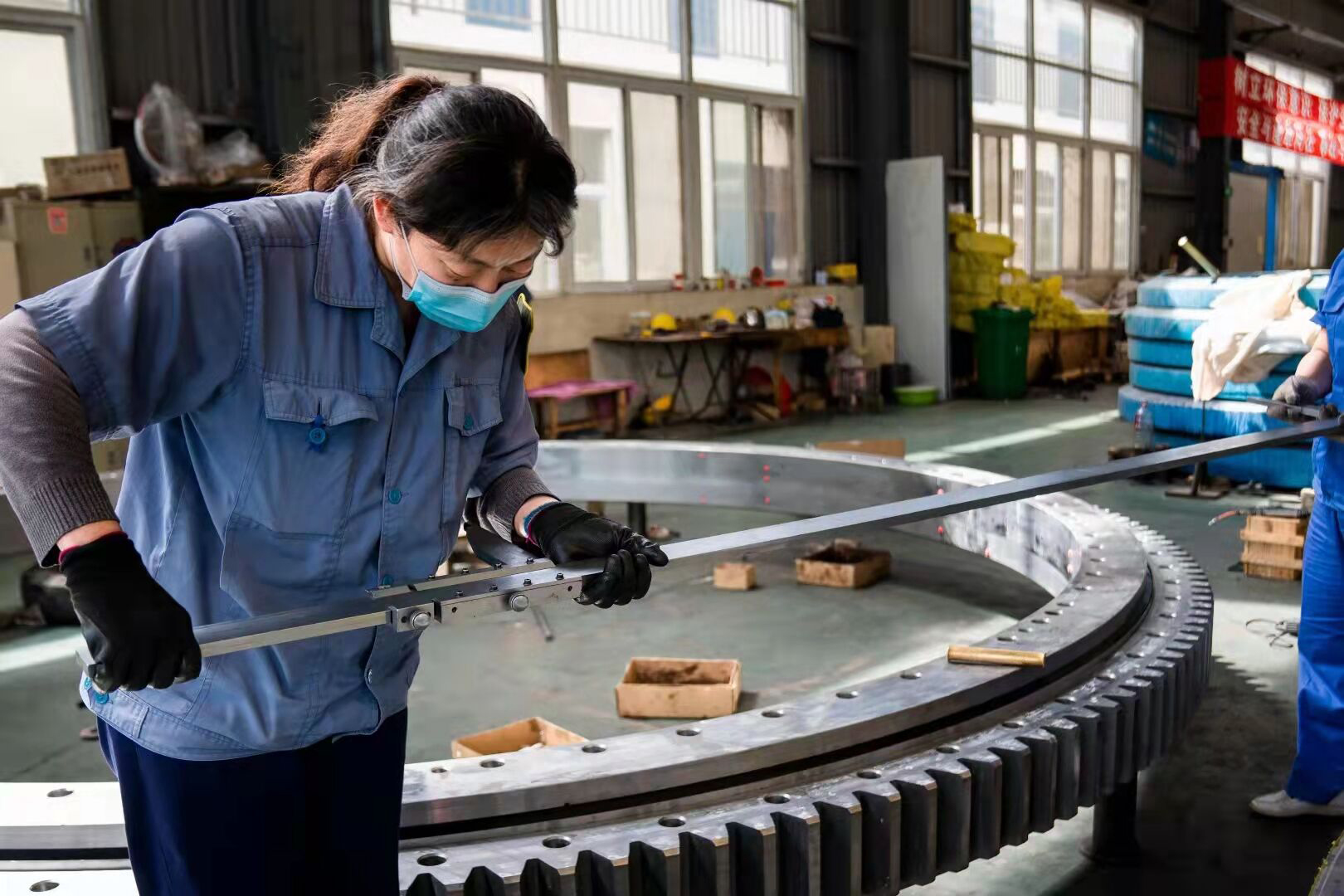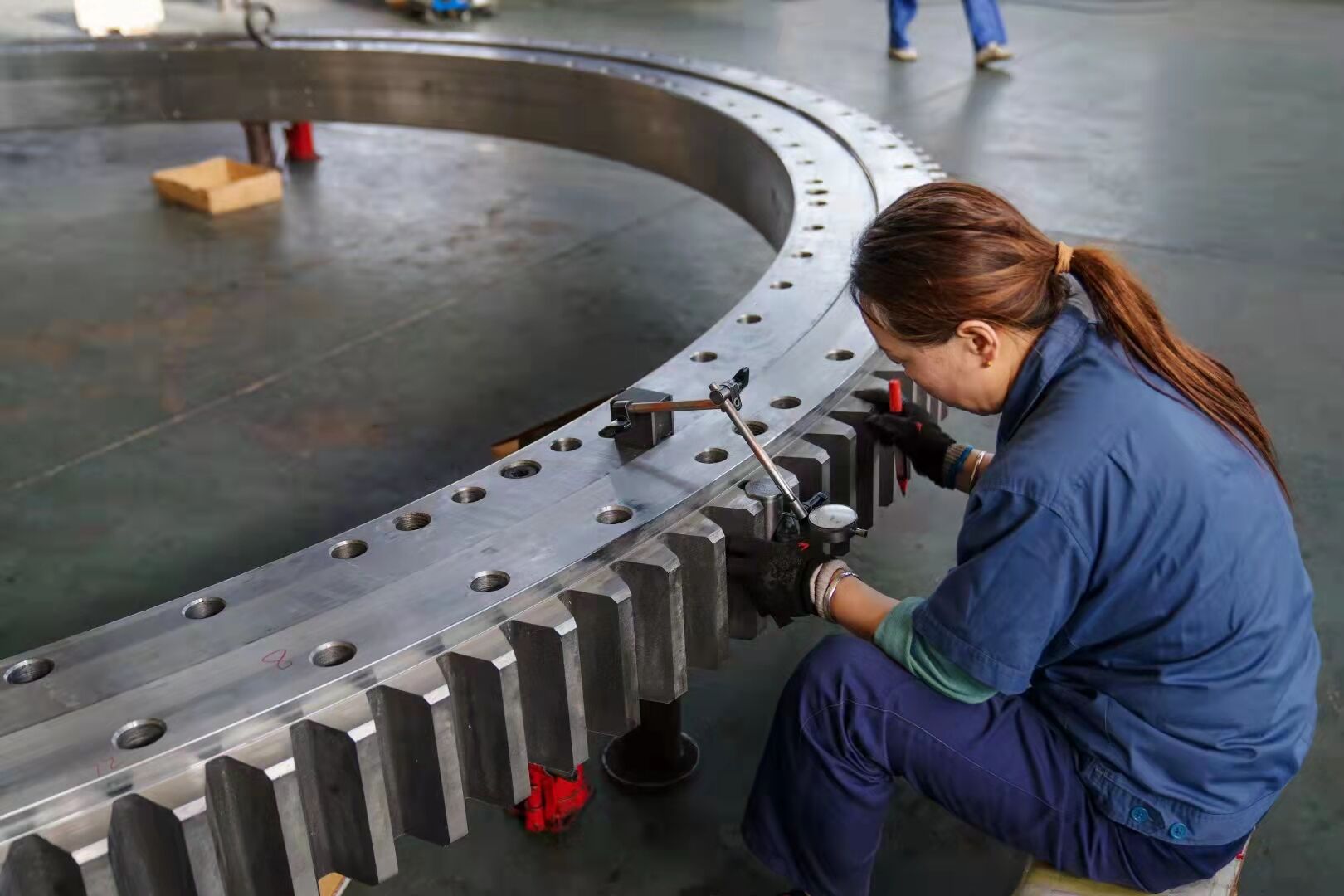Newsroom
What are the inspection steps of slewing bearings after arrival?
2024-11-14Slewing bearings are essential components widely used in engineering machinery, port equipment, and wind power generation. To ensure their performance and safety, a series of inspection steps must be carried out after the delivery of rotary bearings. Below is a detailed description of the inspection steps for slewing bearings.

1. Preliminary Inspection
Upon receiving the slewing bearing, the first step is to conduct a preliminary inspection. This includes opening the packaging, confirming the certificate of conformity and label, and verifying that the bearing model matches the specifications. This step is crucial for ensuring that the product meets basic requirements.
2. Installation Surface Inspection
Requirements for the Installation Surface:
Smoothness: The installation surface must be smooth, and all excess materials such as paint residue, welding beads, and burrs must be removed. Care should be taken during cleaning to prevent solvents from penetrating the interior of the slewing bearing, and solvents that could damage sealing materials must not be used.
Dry Condition: Before assembly, the installation surface should be dry and free of lubricants to ensure good contact.
Flatness and Roughness Measurement:
The roughness of the installation surface should not exceed Ra=12.5 to 6.3μm.
The flatness error must be checked for circumferential and radial errors. The tolerance for circumferential flatness should be determined based on the diameter of the rolling track of the slewing bearing to avoid localized overload due to improper installation.
3. Stiffness Inspection of the Support
Different standards apply to the stiffness requirements of supports for standard and zero-clearance slewing bearings. It is essential to ensure that the support can withstand expected loads without significant deformation, which is crucial for maintaining the stability of the slewing bearing.
4. Positioning Inspection
The inner and outer ring rolling tracks of the slewing bearing should have a soft band placed on both sides of the main load plane, offset by 90 degrees from the main load area. There should be a blockage or an "S" mark at the soft band location.
Fit Inspection:
Check the fit between the slewing bearing and the installation surface, typically using feeler gauges for measurement. If the fit is poor, appropriate materials should be used for filling.
After installing the slewing bearing, welding operations on the support are prohibited to avoid affecting its structure.

5. Performance Testing
After completing the above inspections, performance testing is also necessary. This includes:
Visual Inspection: Check for any obvious surface defects, deformations, or damage on the slewing bearing.
Dimensional Measurement: Use high-precision measuring tools (such as calipers and micrometers) to measure inner and outer diameters, thicknesses, rolling track diameters, etc., ensuring they meet design specifications.
Clearance and Runout Measurement: Measure the clearance and radial/axial runout of the slewing bearing to assess its operational accuracy.
6. Lubrication and Storage
After completing all inspections, lubrication treatment should be applied to the slewing bearing. Use standard or special grease to fill the track system and store it properly to prevent rust or other damage during storage.
7. Pre-installation Preparation
Before formal installation, it is necessary to reconfirm that all inspection results meet standards and prepare required tools and materials. Ensure that the work environment is clean and take necessary safety measures to protect workers and equipment.
Conclusion
By following these steps, one can effectively inspect and confirm the quality and performance of slewing bearings. These inspections not only help identify potential issues but also ensure safety and reliability during actual operation. Regular inspection and maintenance of slewing bearings in engineering machinery and other applications are vital measures for ensuring normal equipment operation.


